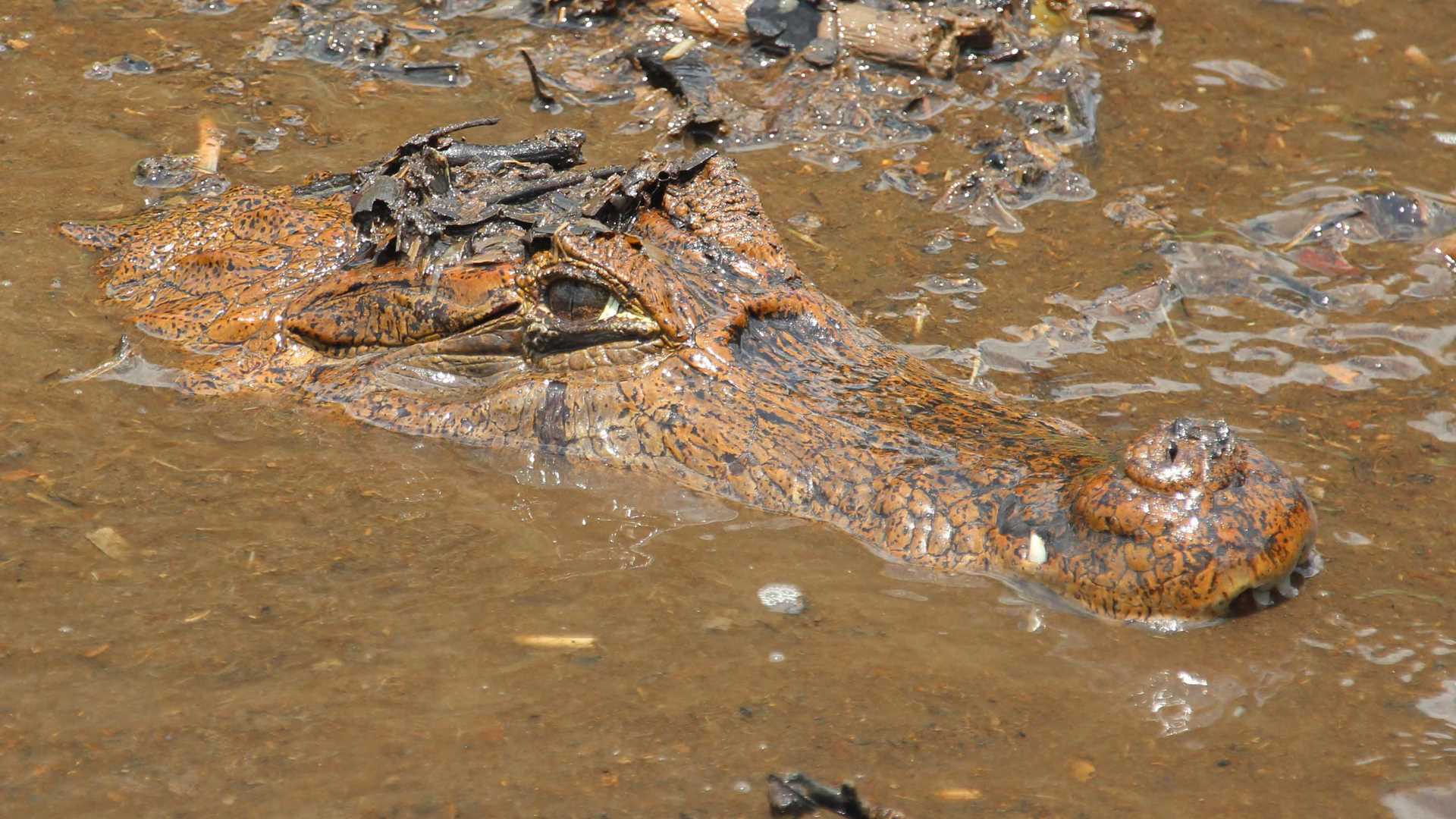We got an early start today so that we could explore deep inside the Pacaya-Samiria Nature Reserve. The rising sun cast brilliant pink and orange reflections on the river as we looked from the deck of the Delfin II to the immense green forest just beyond where we had docked for the night. After loading the skiffs, our first stop was to sign the log book at the ranger station and thus, our presence here is documented for the ages.
In the reserve, we traveled up the Pacaya River and saw many of the species we have become familiar with over the last week. Blue-and-yellow macaws, cocoi heron, spectacled caiman, squirrel monkeys and the enormous jabaru stork. However, we also began seeing things that were new to us on this journey, beginning with a large group of bizarre-looking hoatzin. Distantly related to cuckoos, these birds look more like prehistoric dinosaurs. As we watched them from the skiffs, they were aware of our presence but did not immediately fly away like most birds. Instead, they made a variety of odd sounds and cautiously moved to adjacent branches, but almost as if they were just going through the motions but didn’t really care that we were there. Apparently, people do not eat them because of their bad-tasting flesh, so we may not have appeared as much of a threat.
Another species we saw for the first time on our journey were yellow-spotted river turtles. At first, it was just one or two basking on logs but once we had the proper search image they seemed to be everywhere. Amazon River turtles and their eggs have been prized as a culinary treat by humans since people first arrived in the Amazon Basin. Since then, these turtles have almost met the brink of extinction multiple times. In the 19th century, they were heavily exploited for their oil and more recently the demand for turtles continues to expand as the human population grows.
Fortunately, Peru recognized this threat before it was too late and began a “head start” program to reduce poaching and help augment the survival of nests and hatchlings. This season alone approximately 185,000 eggs have been carefully collected in the reserve and are now waiting to hatch in sandbox “incubators” on the shore at the various park stations in the reserve.
The local people living in the reserve now help protect the turtles and ensure that the eggs hatch. They are rewarded by being allowed to collect resources from the reserve that otherwise would be off-limits, such as fish and even the infertile turtle eggs. As such, they are stewards of the reserve and help to protect all of its valuable natural resources.
As the day got hotter, we cooled off by swimming in a lagoon in the middle of the reserve. Around us the dense vegetation reflected on the black water and pink river dolphins periodically rose to the surface to take a breath. So much life is here and it is a thrill to be a part of it. We are thankful that these natural wonders are protected in the reserve and that we have the opportunity to enjoy and appreciate them.









